Using Zoom for Online Classes
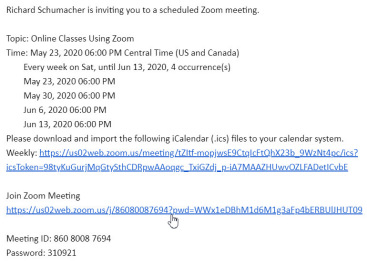
If this is your first class using Zoom, click either the Join Zoom Meeting link you receive via the email account you used to register for the course or use this Zoom Test Meeting link at least 24 hours before the start of the class and follow the installation instructions below to install and test the Zoom app.
Joining a Meeting with the Zoom App
Open the meeting request in your email or calendar, and click on the Join Zoom Meeting link provided.
If you are using a USB microphone, USB headset, or USB webcam, connect them before installing the Zoom App or entering the meeting.
If this is your first time using Zoom, follow your browser's instructions for installing the Zoom App, which is required for audio, video, and screen sharing.
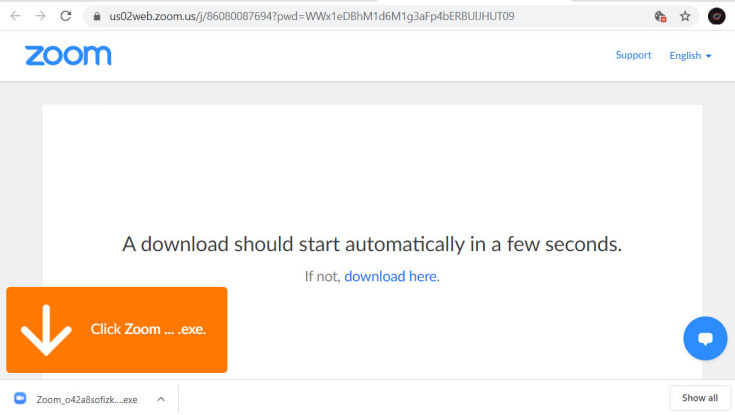
You may use any current web browser to join the meeting. Each browser's installation instructions will vary. In this example we are using Google Chrome. This example instructs you to click the app file to install it.
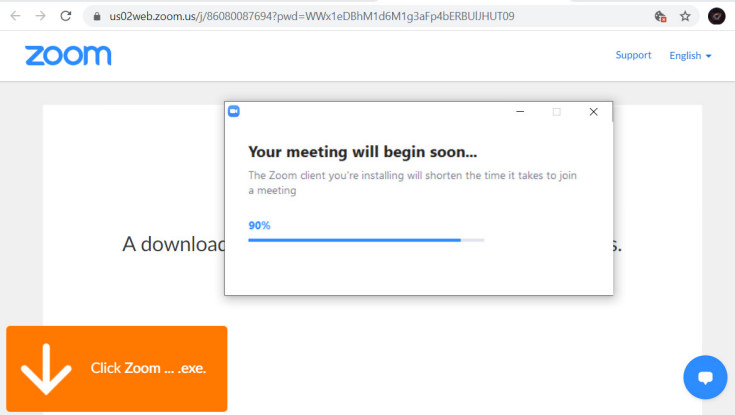
Wait for the installation of the Zoom App to finish. On the Zoom Enter your name sign-in page, type your name in the box, and select the Join Meeting button.
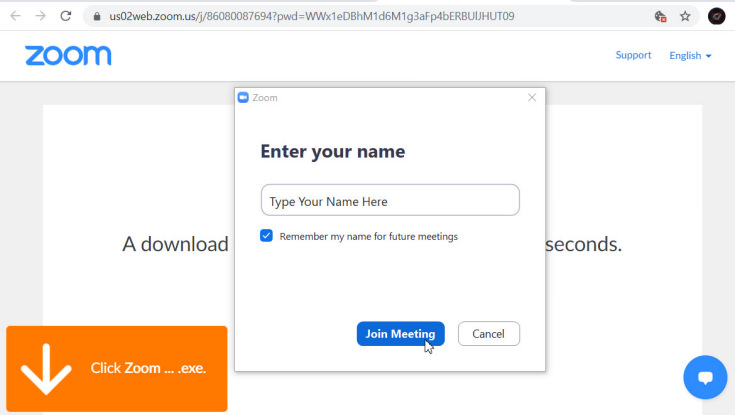
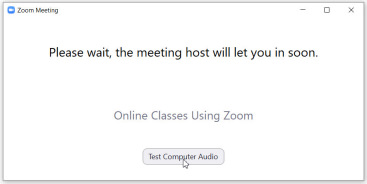
Depending on the meeting options set by the online class organizer, you'll either join the meeting immediately, or be directed to the meeting waiting room.
If you're in the waiting room, the meeting organizer and other presenters are immediately notified that you're waiting.
This is an excellent time to test your computer audio.
Using Zoom Settings to setup and test audio and video
All of the configuration options for your Zoom app are available under Settings. Selecting the Audio setting displays speaker and microphone options and tests. Most online class users will also want to select the "Automatically join audio by computer when joining a meeting" check box. You may also want to select the "Mute my microphone when joining a meeting" option.
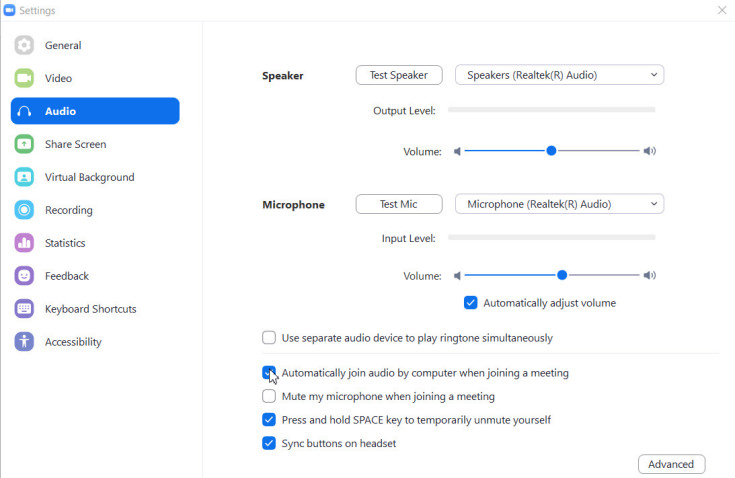
Click the Test Speaker button to test the volume level of your speakers. The Volume slider allows you to change the volume up or down. The drop-down list allows you to select which speakers will be used.
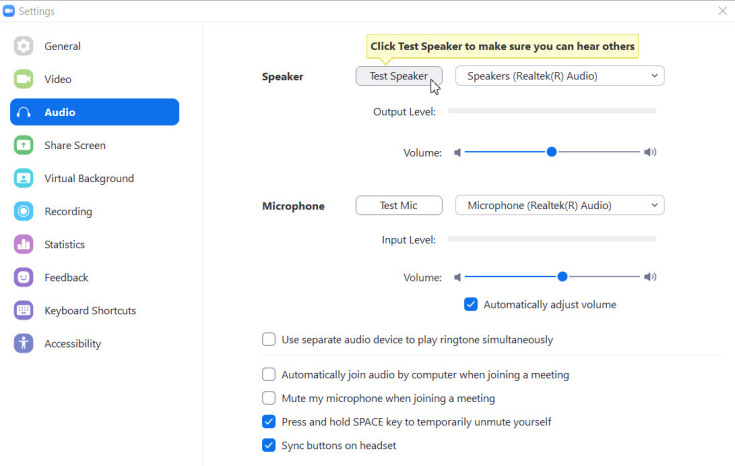
Click the Test Mic button to test the operation of your microphone. The Volume slider allows you to change the volume up or down. The drop-down list allows you to select which microphone will be used.
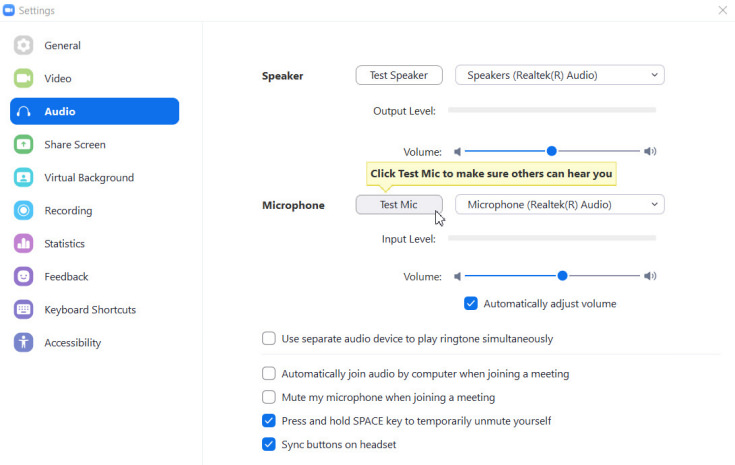
The Advanced button at the bottom right lets you customize Audio Processing options. These are helpful if you have echo or background noise issues. Echo can be caused by many things, such as a participant connected to the meeting audio on multiple devices or two participants joined in from the same local. Select the Back link at the top to return to the Settings window.
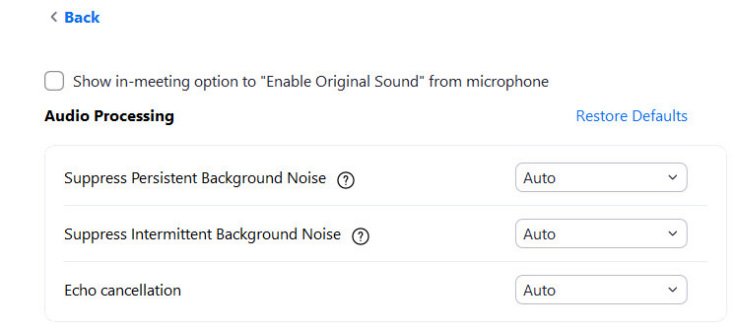
Selecting the Video settings displays a preview from your camera, and allows changes to the camera settings or the camera to use (some devices have "front" and "back" cameras, the drop-down list allows you to pick the camera to use).
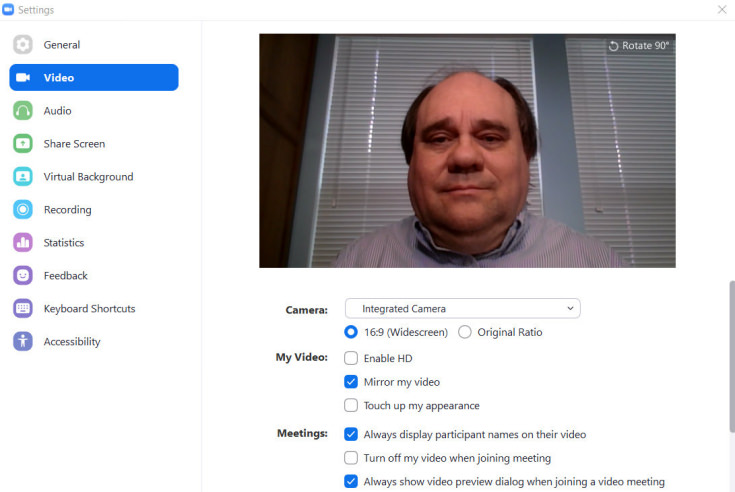
Scrolling down displays additional video options, as well as a "Did not see any video, troubleshooting" link with recommendations for common video problems. In many cases the problem may be that the camera is in use by another application, or was not connected before starting the Zoom App.
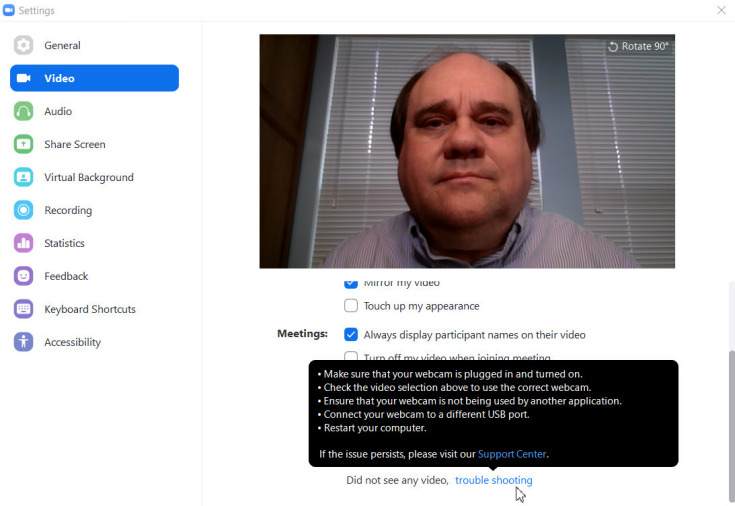
Accessibility Settings
The Accessibility settings allow you to change the size of closed caption and chat text. This is also where you can select the "Always Show Meeting Controls" option.
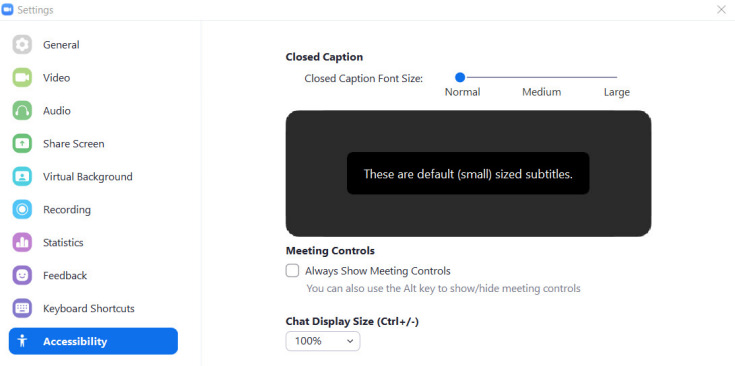
Meeting Controls
The Meeting Controls appear at the bottom of the Zoom window. Pressing the Alt key will show/hide the meeting controls.

Mute/Unmute Microphone: Mute or unmute the microphone. Menu provides access to audio settings and tests. You can press and hold the spacebar to quickly mute and unmute your mic.
Start/Stop Video: Start or stop the video camera. Menu provides access to video settings.
Participants: View the meeting participants.
Chat: Allows you to see and send chat messages to other users within a meeting. Meeting hosts can control whether participants can chat with everyone, or only with the host.
Share Screen: Allows for screen sharing on desktop, tablet and mobile devices. The host and attendee can screen share by clicking the Share Screen icon. The host does not need to grant screen share access for another participant to share their screen. The host can prevent participants from accessing screen share.
You can share your entire desktop, or just one of the windows that is open. Click the red Stop Share button (at the top of the screen) to go back to being a normal participant in the meeting.
Record: Meeting hosts can start or stop a cloud or local recording.
Reactions: Send a thumbs up or clapping icon to communicate without interrupting the meeting. Reactions will disappear after 5 seconds.
Leave button: Leave the meeting.
Gallery view lets you see everyone in the meeting at once, instead of just the person speaking. To turn that on, click the tab that says "Gallery view" in the top right corner.
Virtual Background
The Virtual Background feature (under Settings) allows you to display an image or video as your background during a Zoom Meeting. This feature works best with a green screen and uniform lighting, to allow Zoom to detect the difference between you and your background. This requires specific setups and hardware to work correctly. Virtual Background details at the Zoom website.
Web Browser Requirements
- Internet Explorer 10 or higher
- Chromium Edge 80 or higher
- Google Chrome 53.0.2785 or higher
- Safari 10.0.602.1.50 or higher
- Firefox 76 or higher
Using Mobile Devices with Zoom
- Zoom Cloud Meetings app for iOS
- Zoom Cloud Meetings app for Android
- Zoom Cloud Meetings for Blackberry
- System requirements for iOS, iPadOS, and Android
- Why isn't the audio working on my mobile device?